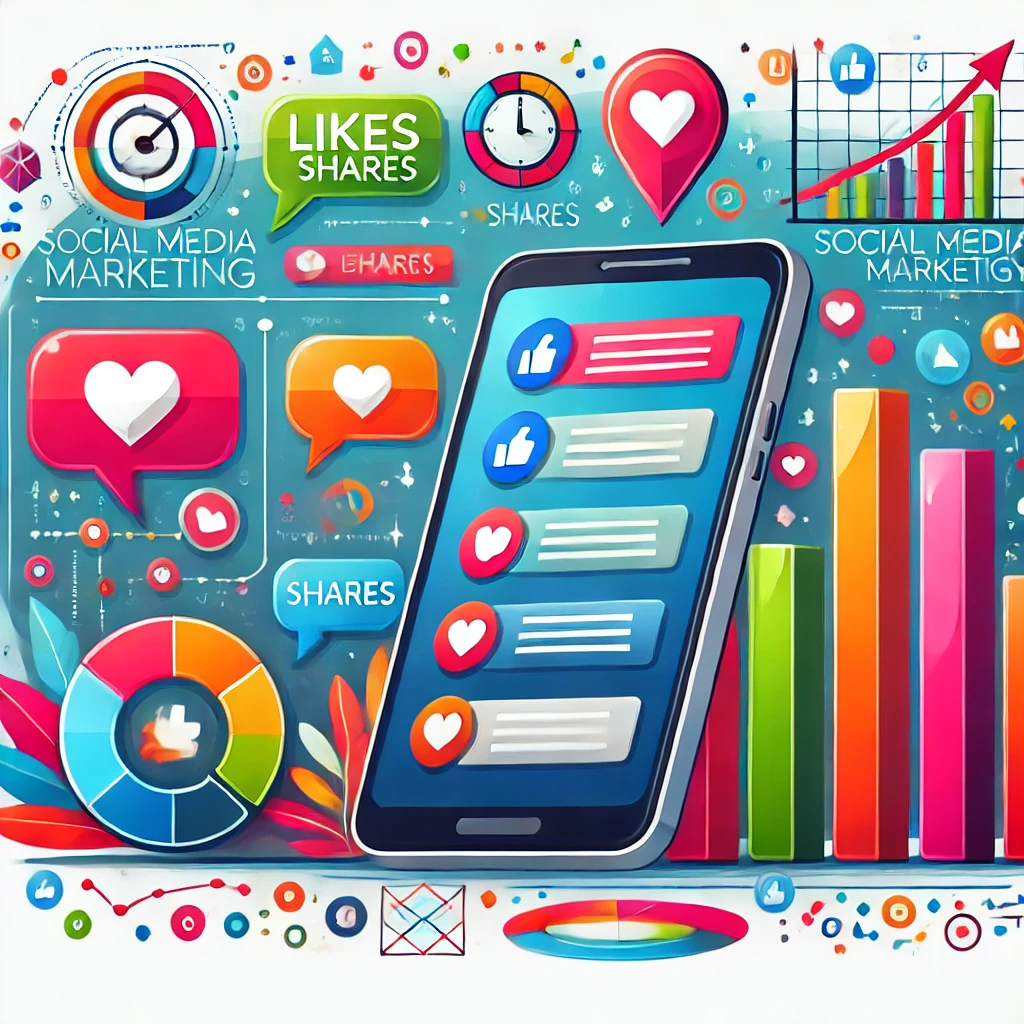How to Use Social Media Marketing Effectively?
1. Introduction: The Social Media Revolution
Sarah, a small business owner, struggled to gain traction for her handmade jewellery store. Despite having a visually appealing website, her sales remained stagnant. That changed when she leveraged social media marketing. Within months, her Instagram page attracted thousands of followers, and her revenue tripled. This is the power of social media when used effectively.
With over 4.95 billion social media users worldwide in 2024 (Statista), platforms like Facebook, Instagram, LinkedIn, and TikTok are no longer just for entertainment. They are powerful tools for businesses to connect with their audience, drive engagement, and boost sales. But to harness their full potential, brands need a strategic approach.
2. Understanding the Power of Social Media Marketing
2.1 The Growth of Social Media Users
- According to Statista, the number of global social media users is expected to reach 5.17 billion by 2025.
- Mobile connectivity has significantly increased social media usage, with 91% of users accessing platforms via mobile devices (Hootsuite).

2.2 Why Social Media is Essential for Businesses
- Brand Awareness: Social media increases visibility and helps businesses establish an online presence.
- Customer Engagement: 71% of consumers who have a positive social media experience with a brand are likely to recommend it to others (Forbes).
- Lead Generation & Sales: 54% of social media users research products on platforms before purchasing (GlobalWebIndex).
3. Choosing the Right Social Media Platforms
3.1 Facebook: The Giant of Social Media
- Best for broad audience reach and community building.
- Facebook Ads offer advanced targeting based on demographics, interests, and behaviours.
3.2 Instagram: Visual Storytelling at Its Best
- Over 90% of Instagram users follow at least one business (Instagram Business).
- Features like Instagram Shopping and Reels enhance eCommerce potential.
3.3 LinkedIn: The B2B Powerhouse
- 80% of B2B leads come from LinkedIn (LinkedIn Business).
- Great for networking, industry leadership, and content marketing.
3.4 Twitter (X): Real-Time Engagement and Trends
- Best for customer service and industry updates.
- Hashtags boost visibility and enable brands to join trending conversations.
3.5 TikTok: The Rise of Short-Form Content
- TikTok’s algorithm favours high-engagement content, making it ideal for viral marketing.
- User-generated challenges boost brand engagement and authenticity.
3.6 Pinterest: A Goldmine for E-commerce
- 85% of Pinterest users make purchase decisions based on pins (Pinterest Business).
- Best for lifestyle, fashion, and home decor brands.

4. Crafting a Winning Social Media Strategy
4.1 Defining Clear Objectives
- Set SMART goals (Specific, Measurable, Achievable, Relevant, Time-bound).
- Align objectives with broader marketing and business goals.
4.2 Understanding Your Target Audience
- Use social media analytics to determine demographics and user behaviour.
- Tailor content to suit different audience preferences on each platform.
4.3 Creating a Content Calendar
- Maintain consistency with a posting schedule.
- Use scheduling tools like Buffer, Hootsuite, and Later.
5. The Art of Content Creation for Social Media
5.1 The Power of Storytelling in Marketing
- Emotional storytelling increases engagement and builds brand loyalty.
- Case study: Nike’s “You Can’t Stop Us” campaign, which generated 50 million views within 24 hours (Adweek).
5.2 Types of Engaging Content
- Educational posts, tutorials, and behind-the-scenes content perform well.
- User-generated content (UGC) builds credibility.
5.3 Optimizing Content for Each Platform
- Short-form vs. long-form content strategies.
- The importance of captions, hashtags, and calls to action (CTAs).
6. Leveraging Paid Social Media Advertising
6.1 Facebook & Instagram Ads: A Data-Driven Approach
- Retargeting ads have a 70% higher conversion rate (HubSpot).
- Lookalike audiences help reach potential customers based on existing user behaviour.
6.2 LinkedIn Ads for B2B Lead Generation
- LinkedIn InMail has a 52% open rate, significantly higher than email marketing (LinkedIn).
6.3 TikTok and Snapchat Ads: Reaching Gen Z
- TikTok ads have an average engagement rate of 9%, outperforming many other platforms (Social Media Today).
7. Building a Loyal Community
7.1 Engaging with Followers
- Replying to comments and DMs increases brand trust.
- Hosting Q&A sessions and polls enhances interaction.
7.2 Running Contests and Giveaways
- Giveaways increase engagement by 34% on average (Tailwind).
7.3 Leveraging Influencer Marketing
- Micro-influencers (10 K- 50 K followers) have 60% higher engagement rates than celebrities (Influencer Marketing Hub).
8. Measuring Social Media Success
8.1 Key Metrics to Track
- Engagement Rate, Click-Through Rate (CTR), Conversion Rate, Reach, and Impressions.
8.2 Tools for Analytics and Reporting
- Google Analytics, Meta Business Suite, and Sprout Social for tracking performance.
9. Social Media Trends for the Future
9.1 The Evolution of AI in Social Media
- AI-driven chatbots improve customer interactions and response times.
- AI-powered personalized content recommendations boost engagement.
9.2 The Rise of Social Commerce
- Instagram Checkout and TikTok Shop are transforming e-commerce.
- Direct shopping from social media is expected to grow to $2.9 trillion by 2026 (Insider Intelligence).
10. Conclusion: Take Action Today!
The digital landscape is ever-evolving, and social media marketing is at its forefront. From choosing the right platform to crafting engaging content, leveraging paid ads, and tracking performance, success lies in a strategic approach. Businesses that invest in social media marketing today will thrive in the future of digital commerce. Start optimizing your strategy now and watch your brand soar!
